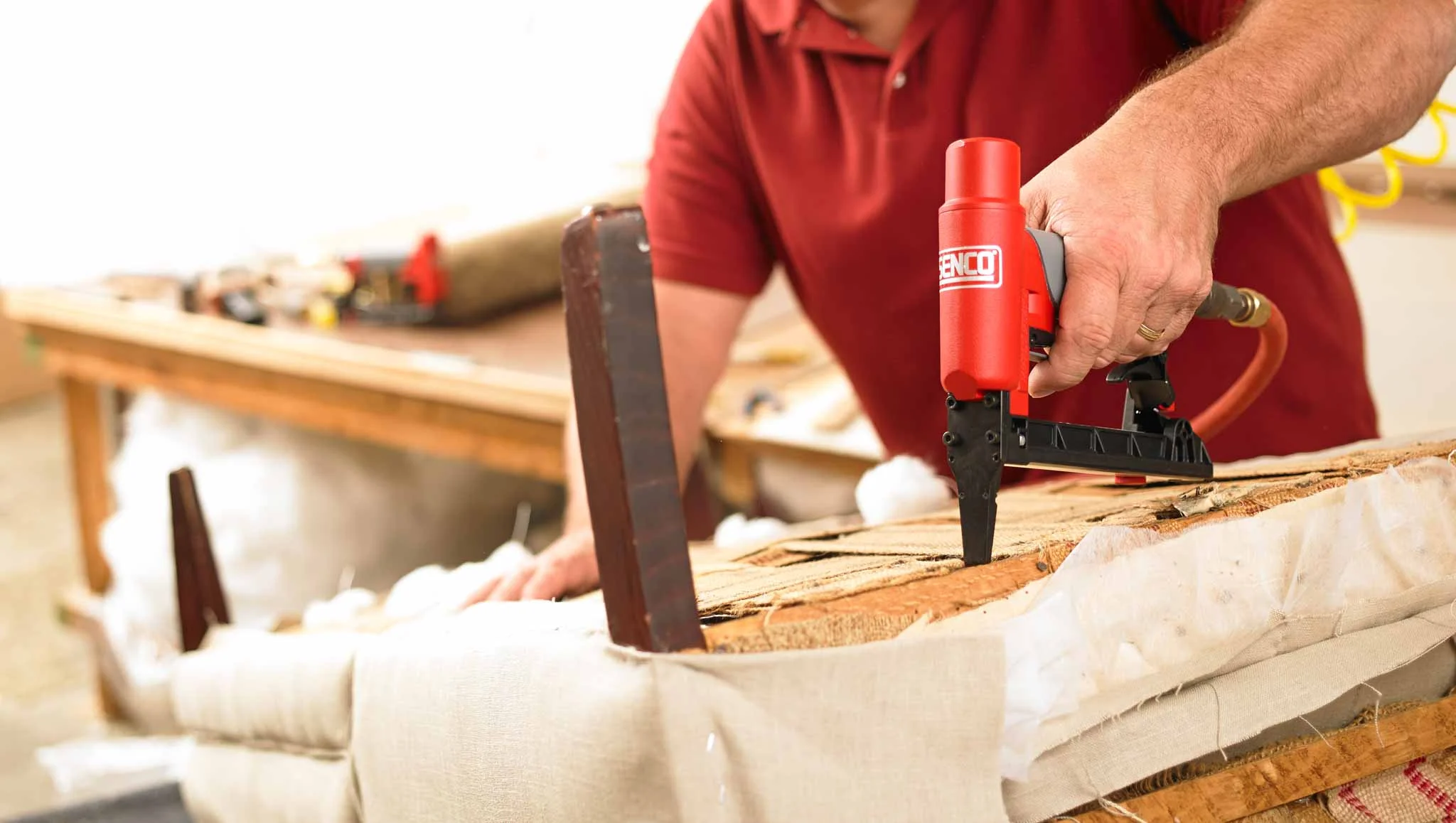The Impact of Nail Gun Weight

Striking the Right Balance Between Weight and Durability
Nailers are indispensable tools for professionals and DIYers, making jobs like framing, roofing, siding, and woodworking faster and easier. When choosing a nailer, there are dozens of features to consider, such as power, size, and durability. However, many users – especially professional framers and carpenters who will be firing thousands of nails a day – focus on the weight of the tool.
Weight can impact both the operator and the overall quality of the work. Using a heavy nail gun for extended periods can lead to user fatigue, particularly when holding the nailer overhead. Fatigue can make it harder to hold a steady hand, reducing precision and productivity. Lighter tools are generally thought of as more comfortable to use over extended periods.
However, weight isn’t the be-all, end-all factor it used to be. Today’s nail guns are designed with ergonomics and balance in mind, reducing strain on the user during long periods of use. And weight is a sign of robustness – tools that can withstand abuse on the job site tend to use more durable components that may make them slightly heavier than lower-quality nailers.
Here are several factors that can help you determine how much the tool’s weight should impact your purchase decision.
ERGONOMICS AND BALANCE
Manufacturers like SENCO are increasingly focused on designing nail guns with ergonomic features that prioritize user comfort and reduce fatigue, even when using heavier nailers. Look for models with padded grips, balanced weight distribution, and adjustable settings to cater to different tasks and user preferences.
A well-balanced nailer feels lighter than it is. Older model and poorly engineered tools are often excessively top heavy, with the bulk of the tool resting at the top of the hand. However, tools like SENCO’s most recently redesigned framing nailers have closer-to-equal weight on all sides of your hand, reducing wrist and forearm strain and allowing for better maneuverability. The angle of the tool’s nose, positioning of the magazine, and the length of the grip also play a role in preventing fatigue.
SIZE
First and foremost, make sure you purchase the right nailer for the job. Tool weight is a negligible factor when selecting small pin and brad nailers but becomes more noticeable for medium- and large-body nailers, such as finish and trim nailers, roofing nailers, and framing nailers. Larger nailers will naturally be heavier – they are manufactured from more material to accommodate larger nails and to store enough power to drive them. The nails add weight as well. Make sure you’re using the right nailer for the job to avoid quality issues in your work.
POWER
The material being nailed also plays a role in choosing the right nail gun. For denser materials, a slightly heavier nail gun may be required to ensure proper nail penetration. More driving power is needed to sink nails in dense materials like engineered lumber, which is becoming more and more common on construction sites all over the world.
Nailers operate by storing air from a compressor in a reservoir, which is released when the trigger is pulled, actuating a piston that hammers nails completely in a single strike. Heavier-duty nail guns feature larger reservoirs that can hold more air and thicker bodies to accommodate higher pressures. If you’re working with hard wood or engineered lumber, you will likely need a heavier nail gun.
DURABILITY
Construction sites are notoriously tough on tools. Whether it’s clattering against other tools on your belt or taking a two-story fall off a ladder, your nailer should be built tough in order to last a long time. As it is with everything, more robust nailers are made from thicker and higher quality materials, which add weight.
Common failure points, such as the belt hook, should be made from higher quality materials like steel or aluminum on heavier duty tools. Magazines, which can stop feeding nails if they get dented or bent, also need to be tough. Such components add extra ounces to the tool but are necessary to prevent you from constantly repairing or replacing tools when working in harsh environments.
CORDLESS VS. CORDED
Battery-powered nailers are more portable than their corded pneumatic counterparts, but they shouldn’t necessarily be lighter. Batteries add a considerable amount of heft to any cordless power tool, in addition to the weight of extra electronics and components. Some cordless nailers overcome this by lowering build quality and using lighter-weight batteries, which come with considerable drawbacks. If you want a durable nailer that feels and functions like a traditional pneumatic tool, with a battery that lasts for hundreds of shots, you’ll need to take on some additional weight.
Learn More About Cordless Technologies
In the world of construction and carpentry, choosing the right nail gun requires careful consideration of the tool’s weight and how it aligns with the job at hand. Medium- and heavy-duty nailers typically weigh between 4 and 9 pounds, plus another 1 or 2 pounds for cordless models. While lighter weight nailers might feel more comfortable, don’t forget to consider power and durability in your purchase decision, and get a feel for the tool in your hand to judge its balance.

